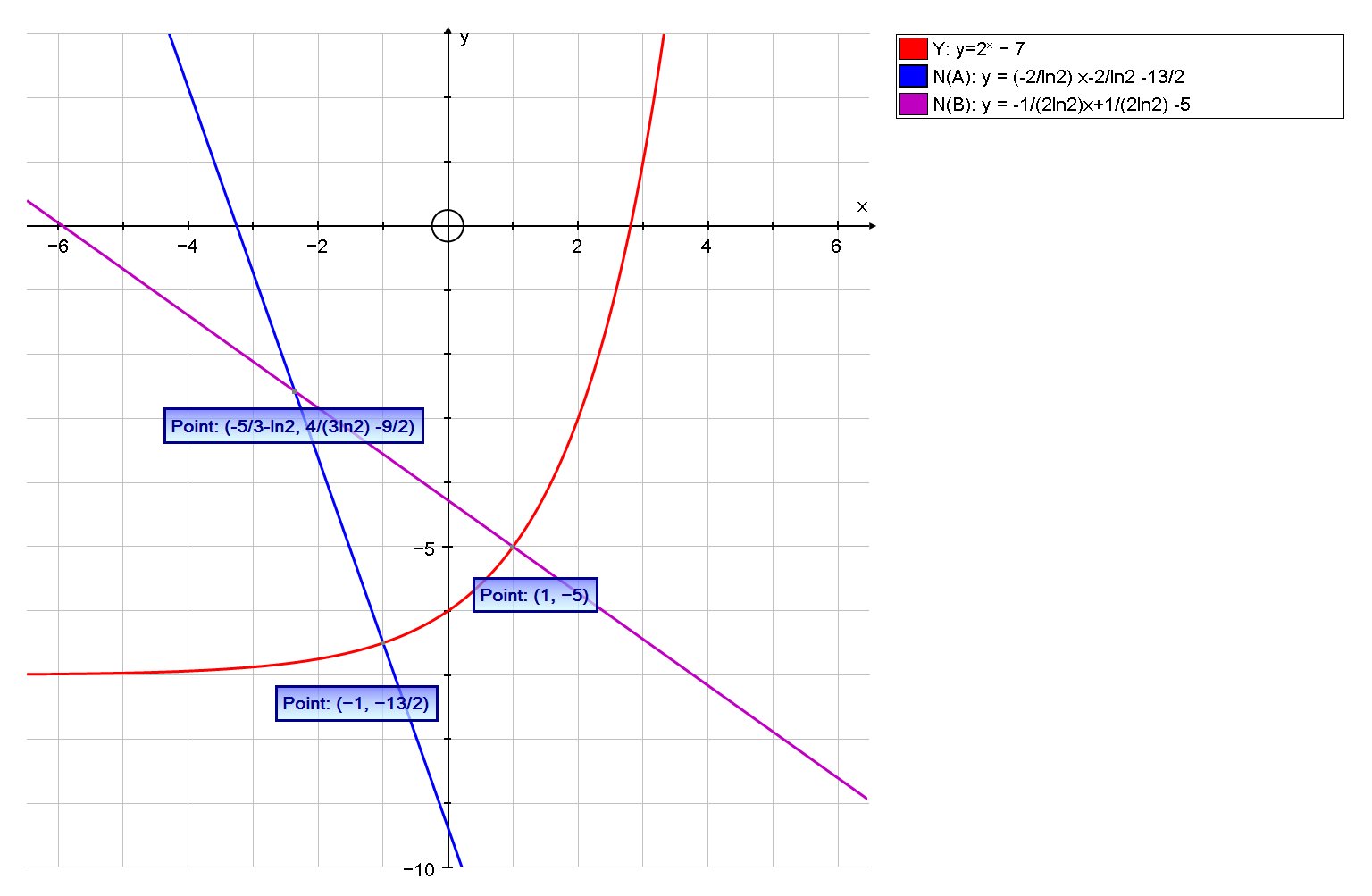How to do this?
equations of the normals to the curve
#y=2^x - 7# at the points where #x=1# and #x=-1.# calculate the coordinates of the point of intersection of these normals.
equations of the normals to the curve
1 Answer
The Normals at
# (-5/3-ln2, 4/(3ln2) -9/2)#
Explanation:
The gradient of the tangent at any particular point on the function is given by the derivative at that point. The normal is perpendicular to the tangent, so their products will be
Differentiating wrt
When
Let
At A:
gradient of tangent
gradient of normal
So normal passes through
# y - (-13/2) = -2/ln2(x-(-1)) #
# y +13/2 = -2/ln2x-2/ln2 #
# y = -2/ln2x-2/ln2 -13/2# ..... [1]
At B:
gradient of tangent
gradient of normal
So normal passes through
# y - (-5) = -1/(2ln2)(x-1) #
# y +5 = -1/(2ln2)x+1/(2ln2) #
# y = -1/(2ln2)x+1/(2ln2) -5# ..... [2]
Point of Intersection
Eq [1] = Eq[2] we get
# -2/ln2x-2/ln2 -13/2 = -1/(2ln2)x+1/(2ln2) -5 #
Multiply by
Subs into Eq [2]:
We can confirm this graphically:


